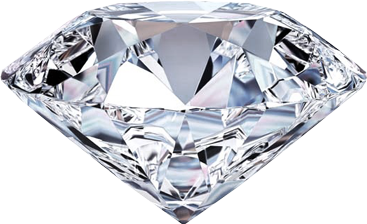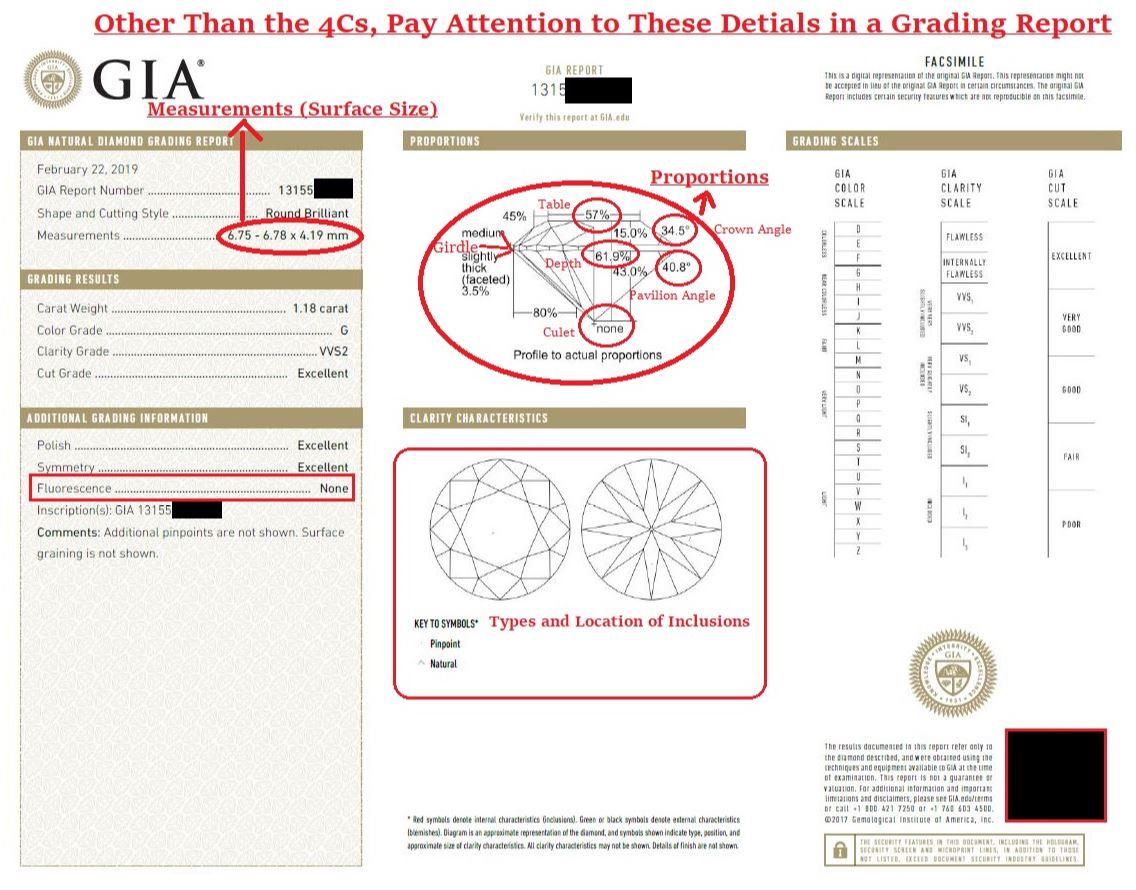IGI vs GIA | What is the Difference?
IGI vs GIA | What is the Difference?
Posted by Sharif Khan on 9th Jun 2022
Comparing IGI to GIA
While GIA and IGI are reputable grading labs, there are noticeable differences in how they grade diamonds. The Gemological Institute of America (GIA) is one of the best grading labs in the world. It is often consistent in grading diamonds and is a standard-bearer for diamond grading in the gem and jewelry industry.
The International Gemological Institute (IGI) is also a large institution and has been around since 1975.
In a nutshell, IGI is not as consistent or strict in grading diamonds as GIA. Therefore, when considering an IGI graded diamond, read our tips below carefully to avoid making obvious mistakes and know what you are in for.
Key Points to Know
- When buying IGI graded natural diamonds, it is safe to assume one grade inconsistency. However, this may not be the case for all diamonds, as some gemologists at IGI might grade diamonds as strictly as GIA.
- Buy a diamond with a complete grading report issued by IGI. The smaller dossiers lack important cut proportions, inclusion types, and fluorescence details.
- The main area where buyers might notice an inconsistency is the color grade of a diamond in the colorless to G color range. However, in lower color grades below I color, IGI grading is sufficient.
- Carefully evaluate IGI graded SI clarity diamonds as they might not be eye-clean.
- Reports issued by IGI for lab-grown diamonds are stricter and more accurate than their reports for naturally mined ones.
It might also be helpful to know that IGI offers grading services for gemstones already set in complete jewelry pieces, while GIA only grades loose stones.
Watch and inspect IGI and GIA graded diamonds in HD 40X MAGNIFIED VIDEOS.
Who are IGI and GIA?
Who is GIA?
The Gemological Institution of America was founded in 1931 as a non-profit institution dedicated to researching, educating, and grading natural gemstones. It wanted to develop a standard so everyone in the industry could use a unified and standard methodology for grading diamonds and other gemstones.
As a result of their dedication and hard work, GIA introduced the International Diamond Grading System (also known as the 4Cs – cut, clarity, color, and carat weight) in 1953. Today, this system is used by everyone, including IGI.
GIA also trains gemologists and has 11 campuses. Moreover, they have nine laboratories and four research centers across 13 countries.
Who is IGI?
The International Gemological Institute is the largest independent gem lab in the world. It is headquartered in the heart of the diamond trade, Antwerp, where De Beers has major operations. The company also has offices in diamond centers worldwide, such as New York, New Delhi, Surat, Hong Kong, Dubai, Shanghai, and Tel Aviv.
IGI, which has more than 650 gemologists and professionals in the jewelry business, has been trying to make itself a well-known diamond grading lab.
What is the Difference Between IGI & GIA?
In Europe and Asia, IGI's grading reports are widespread. However, GIA has been gaining more market share there in recent years. In the United States, GIA is by far the first go-to lab.
In our opinion, IGI is not as strict as GIA when grading diamonds, but it does not mean you should entirely rule them out. As explained below, as long as you make an informed decision, you will still get a good-quality diamond.
Here is what to expect: The Difference between IGI and GIA in grading the 4Cs.
Because IGI is loosely structured globally, slight inconsistencies among its labs may exist, depending on their location.
As a rule of thumb, assuming a one-grade color inconsistency in D-I color diamonds between GIA and IGI graded diamonds is safe. This inconsistency is much minor for J and lower color range diamonds. One can also expect a one-grade clarity inconsistency in IGI and GIA graded diamonds, especially in high investment-grade diamonds with D-F color and Flawless to VVS diamond clarity range.
Be clear with the retailer and ask questions about the clarity of SI1 and SI2 IGI graded diamonds, as they might not be eye-clean. Make sure low-clarity grade IGI diamonds are eye-clean with no obvious noticeable inclusions.
On the bright side, around 10-20% of IGI graded diamonds might be consistent with how GIA would grade them. How? Human beings grade diamonds; individual gemologists grade and then cross-examine them. Therefore, some gemologists in IGI may be as strict as those in GIA. The problem is that they do not consistently grade diamonds across the organization as GIA.
The moral of the story is that unless it is an excellent deal, you are probably not getting a reasonable price on an IGI-graded diamond --- it is just graded higher than it would be in a GIA report.
Think about it; every dealer knows that they would get a better price for a GIA graded diamond (if it is a high-quality stone, as the report says it is) and that it would also sell fast. So, what is their incentive to grade the diamond by IGI? Deep down, they know it is more lenient than GIA and would give more favorable results.
When buying IGI and GIA graded diamonds, pay attention to the types of reports available:
- GIA offers diamond dossiers, typically for small diamonds, as well as full grading reports for diamonds of any size.
- IGI provides two types of diamond grading reports: mini-reports and full grading reports.
Unlike GIA dossiers with sufficient information on them, IGI's mini-grading reports, often issued to vendors in shopping malls, are limited in providing sufficient data about a diamond, especially about the cut quality of a diamond.
Example of a full IGI Grading Report:
Example of a Mini IGI Report
If you are buying an IGI graded diamond, make sure you buy a diamond with a full IGI report issued by one of their well-established labs in the U.S. or Antwerp.
How to Evaluate IGI & GIA Grading Reports?
In addition to the 4Cs, diamond buyers should pay close attention to the following details in a grading report (full grading reports issued by both GIA and IGI should have this information):
Measurements: These details show the surface size of a diamond and can help you determine a diamond’s length-to-width ratio simply by dividing the length by the width of the diamond.
Fluorescence: This is considered the fifth C in a diamond. As such, buyers must not ignore it. It is best to avoid fluorescence; no faint or medium blue can be acceptable or helpful in diamonds that are H or lower in color.
Inscription: This section will show if the diamond grading report number is laser-inscribed on the diamond’s girdle (not necessary, but an additional option for safety purposes).
Comments: This section is critical for finding additional insights about the diamond’s clarity type, enhancements, and other details.
Proportions: The details in this section are crucial for assessing the cut quality of the diamond. It shows the precise proportions of a diamond’s cut. Read our guides for each shape to assess the cut quality of the diamond.
Clarity Characteristics: This section provides details about the type of inclusions and their locations in the graded diamond.
Conclusion
While IGI is a reliable lab, it is still not as consistent as GIA, though we should not entirely rule out the former. Instead, the best approach could be working with the assumption that there might be a slight inconsistency between IGI and GIA regarding diamond clarity and color.
When buying IGI graded diamonds, buy ones with a full IGI report, not the mini-reports, as they do not have any information related to the cut or fluorescence. Moreover, purchasing an IGI diamond with lab reports from their more established U.S. and European labs might be a good idea. It is also important to note that IGI is more consistent with low-grade than high-grade diamonds.
Our best advice would be to go for a GIA certified diamond and avoid the risk altogether if you are a first-time buyer.
As you shop for a perfect diamond, we also suggest that you familiarize yourself with the seven factors that affect the price of a diamond and the four scenarios buyers consider while shopping.
The seven factors include diamond shape, carat weight, color, cut, clarity, fluorescence, and certification.
Finally, here is a list of our top-rated online websites for buying diamonds or engagement rings.






